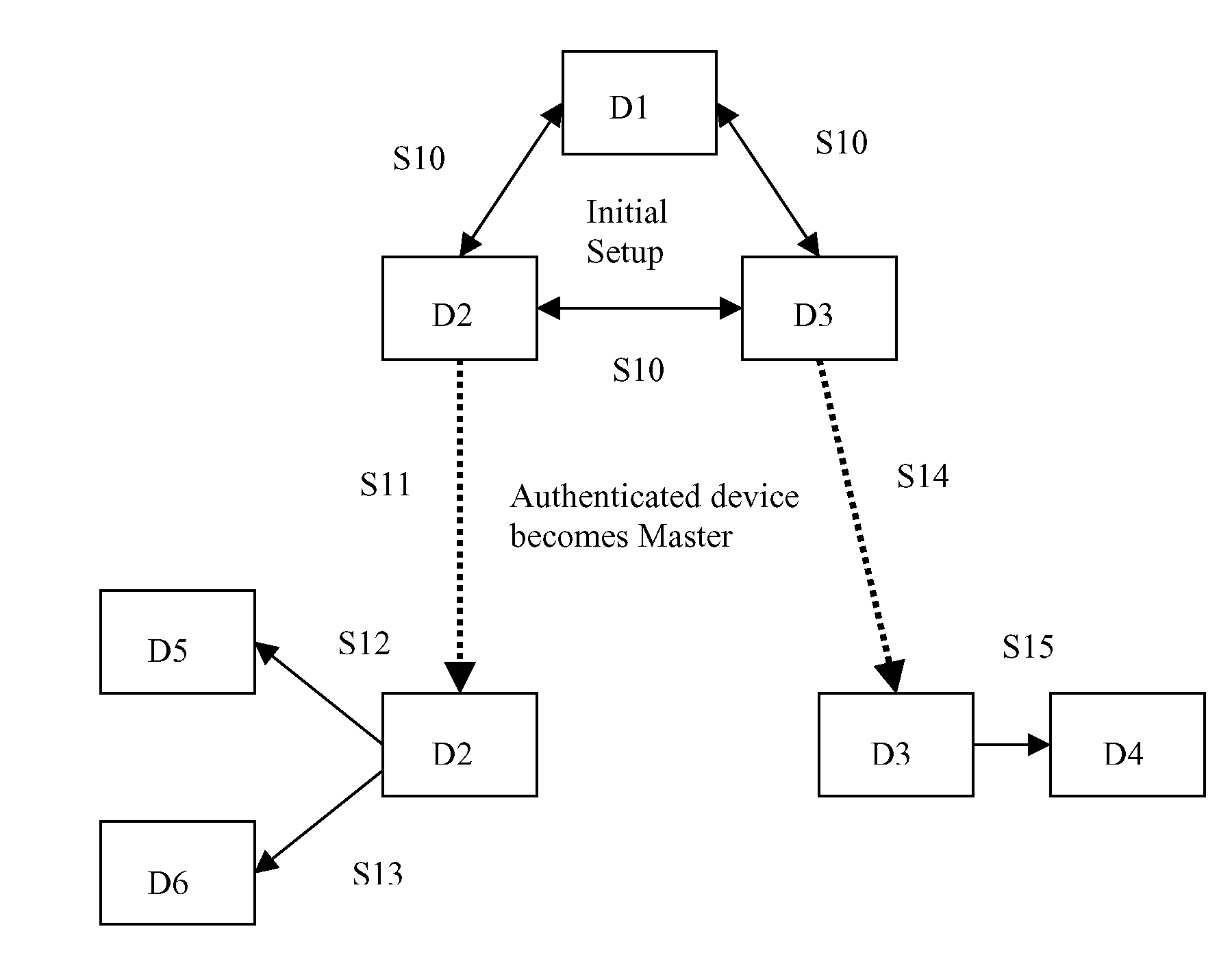Authentication of devices in a wireless network
a wireless network and wireless network technology, applied in the field of wireless network authentication, can solve the problems of user inability to use his/her own equipment, large number of devices being lost, and potential security threats to the rest of the equipment, and achieve the effect of improving the authentication of devices in the wireless network
- Summary
- Abstract
- Description
- Claims
- Application Information
AI Technical Summary
Benefits of technology
Problems solved by technology
Method used
Image
Examples
Embodiment Construction
[0031]In the following, the invention is explained with regard to Near Field Communication (NFC). NFC is a proximity-based ultra low-power, single-chip wireless technology that allows information to be transmitted between devices over a distance of up to 10 cm (4 inches). For most wireless applications this ultra-short range would be considered a distinct disadvantage, but for NFC it is one of its greatest strengths. Ultra-short range not only means that devices must be placed intentionally close together in order to communicate, it also makes the resulting exchange of information inherently secure.
[0032]Although the invention is explained with regard to NFC, it should be noted that it is applicable to any wireless communication standard, particularly to WLAN standards, but also to the above mentioned mobile radio communication standards.
[0033]As explained above, using NFC has the distinct advantage especially in authentication applications because[0034]i. Being short range, it requ...
PUM
 Login to View More
Login to View More Abstract
Description
Claims
Application Information
 Login to View More
Login to View More - R&D
- Intellectual Property
- Life Sciences
- Materials
- Tech Scout
- Unparalleled Data Quality
- Higher Quality Content
- 60% Fewer Hallucinations
Browse by: Latest US Patents, China's latest patents, Technical Efficacy Thesaurus, Application Domain, Technology Topic, Popular Technical Reports.
© 2025 PatSnap. All rights reserved.Legal|Privacy policy|Modern Slavery Act Transparency Statement|Sitemap|About US| Contact US: help@patsnap.com



